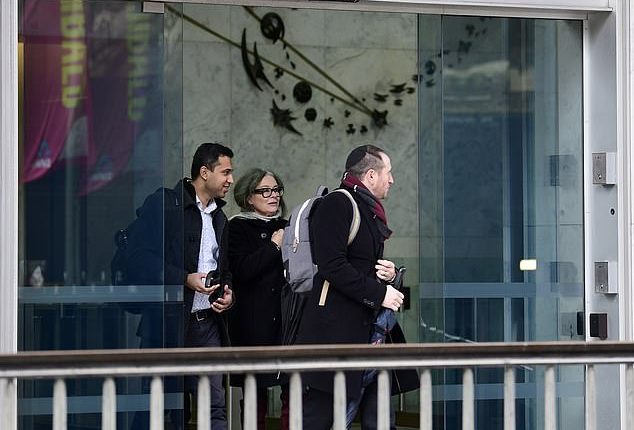- Headline inflation falls to 2.4 per cent – best since early 2021
Australian home borrowers can now expect a rate cut as early as next month with inflation at the lowest level in almost four years.
Headline inflation fell to 2.4 per cent in the December quarter – marking the best consumer price index result since early 2021.
Underlying inflation without volatile price items, also known as the trimmed mean, eased to 3.2 per cent during the same period, putting it only marginally above the Reserve Bank’s 2 to 3 per cent target.
Saxo Asia Pacific’s senior sales trader Junvum Kim said a February rate cut was now likely.
‘This softer-than-expected inflation data could amplify expectations for a February RBA rate cut and bolster the Reserve Bank’s confidence in steering inflation back to its target within a reasonable timeframe,’ he said.
The Commonwealth Bank is expecting a February rate cut but the other Big Four banks are still forecasting a May easing, when an election is due.
A quarter of a percentage point rate cut would save an average borrower $100 on their monthly mortgage repayments.
This would also help Prime Minister Anthony Albanese’s shaky re-election chances, as the cost-of-living crisis erodes Labor’s political standing in opinion polls and makes Opposition Leader Peter Dutton the election favourite.

Australian home borrowers can now expect a rate cut as early as next month with inflation now at the lowest level in almost four years (pictured is the Reserve Bank building in Sydney)
The Reserve Bank focuses on underlying inflation, and relies on the annual number that strips out volatile items like petrol and fruit, instead of the CPI which includes one-off factors like the federal government’s $300 electricity rebates.
‘The Reserve Bank remains laser-focused on core inflation, aiming for the midpoint of the 2 to 3 per cent CPI target range, especially as government subsidies continue to dampen headline prices,’ Mr Kim said.
Cheaper petrol at the end of last year saw transport costs fall by 1.5 per cent in 2024.
But school fees are now the biggest drain on family budgets with education costs climbing by 6.5 per cent.
The official data was taken before the Australian dollar in January sunk to 61 cents for the first time since March 2020 during the start of Covid.
A weaker currency makes imports more expensive, which could delay a potential interest rate cut.
But the latest data was better than economists had been forecasting.
This means the Reserve Bank could potentially cut the cash rate from an existing 4.35 per cent level when it meets again on February 17 and 18.
This would mark the first rate cut since late 2020 during the Covid pandemic and see a save a borrower $104 on monthly mortgage repayments, making it easier to service an average, $642,121 home loan.

Headline inflation fell to 2.4 per cent in the December quarter – marking the best consumer price index result since early 2021 (pictured is a shopper in Sydney’s Pitt Street Mall)









